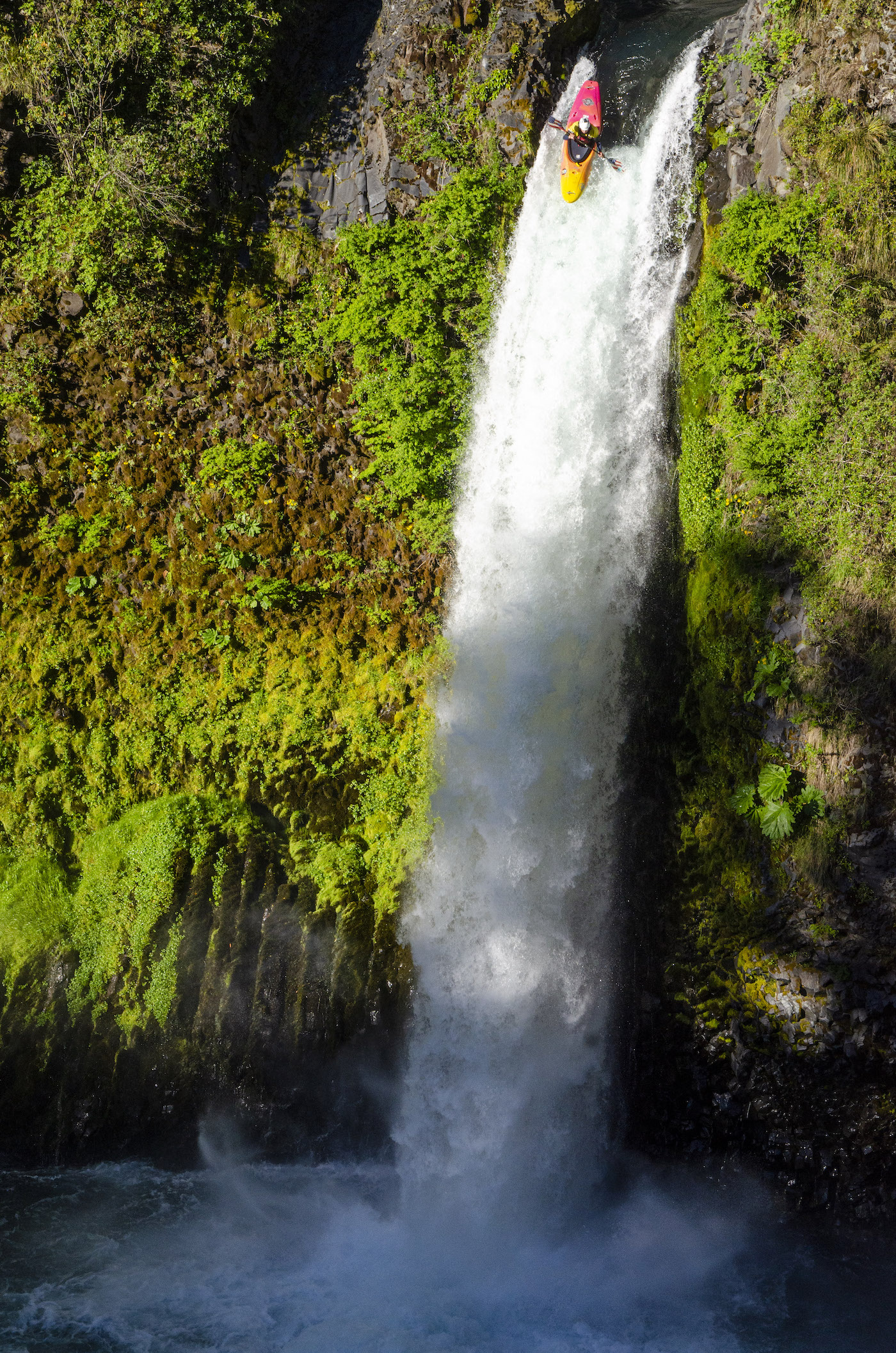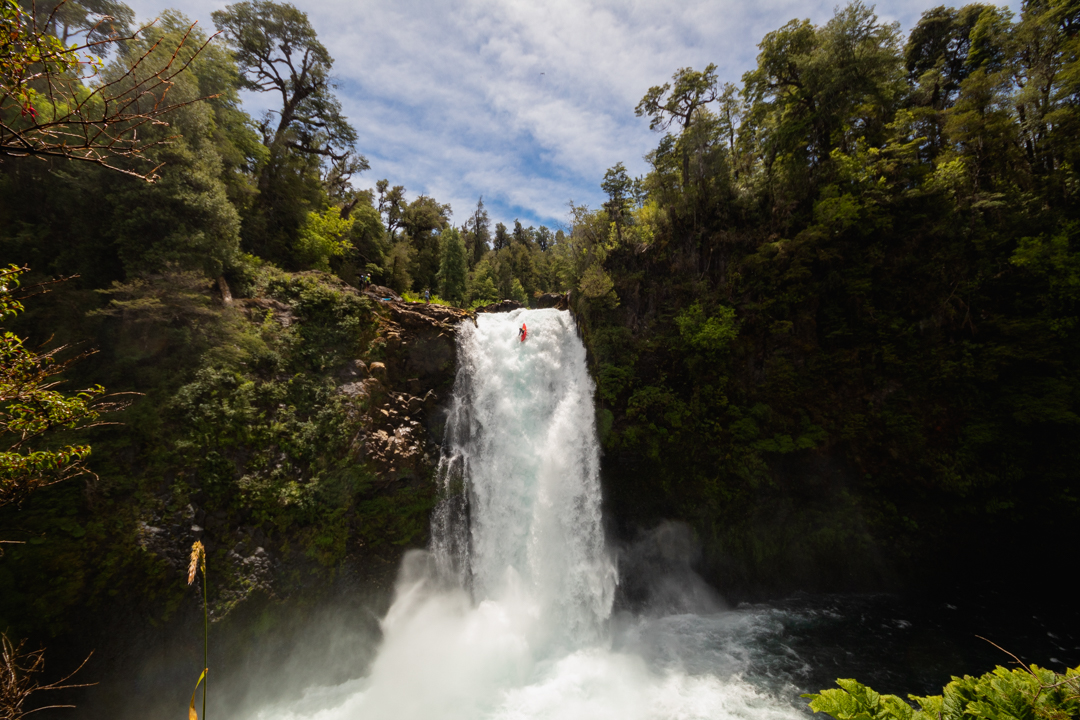 David Toro at El Puma waterfall. Photo: Eli Toro
David Toro at El Puma waterfall. Photo: Eli Toro
Without a doubt white water kayaking is one of the most demanding outdoor sports, both physically and mentally. From the minute you embark on this adventurous pastime, you pit your skill, experience and mental strength against nature.
 David Toro at the Captrén River, in Chile's Araucanía region.
David Toro at the Captrén River, in Chile's Araucanía region.

The waterfall, which is located in the Huilo Huilo park in the Los Ríos region, is intimidating not only due to its height, but also for the technical difficulty of its mouth and power of the leap. But 21-year-old Toro has become the first Chilean to successfully complete the descent. “It’s a very technical waterfall where you seek to ensure that every movement be slight, to feel the air, and visualize the fall and eventual landing. It’s a two -second freefall that is absolutely worth it,” Toro said. Rocío González, director of Futaleufú Riverkeeper, said that this achievement by a local boy from Futaleufu demonstrates the new opportunities that are forming for young people from the town, which is world renowned for the mighty river of the same name that attracts white water lovers every year. The town's young people are getting increasingly involved in kayaking, something mostly unheard of just a few years ago. For that reason, Futaleufu Riverkeeper has also recently created programs such as Chicas al Agua, which not only seeks to train other future world-class kayakers from Futaleufú, but a new generation of environmental activists to help protect Patagonian rivers.
 Santiago Sandoval at El Puma. Photo: Manuel Ortiz
Santiago Sandoval at El Puma. Photo: Manuel Ortiz Santiago Sandoval at Arroyo Zapata, Futaleufú. Photo: Sergio Vidal
Santiago Sandoval at Arroyo Zapata, Futaleufú. Photo: Sergio Vidal
Whitewater kayaking and all outdoor sports are in a state of constant evolution and transformation. The level of connection you feel with nature creates a bond that we as a species have been gradually losing due to the difficulty of accessing wild places. It is likely that this boom in new sportsmen and sportswomen will lead to a new generation of environmental activists that value the beauty of our rivers and the need to protect Chile’s unique landscape.

